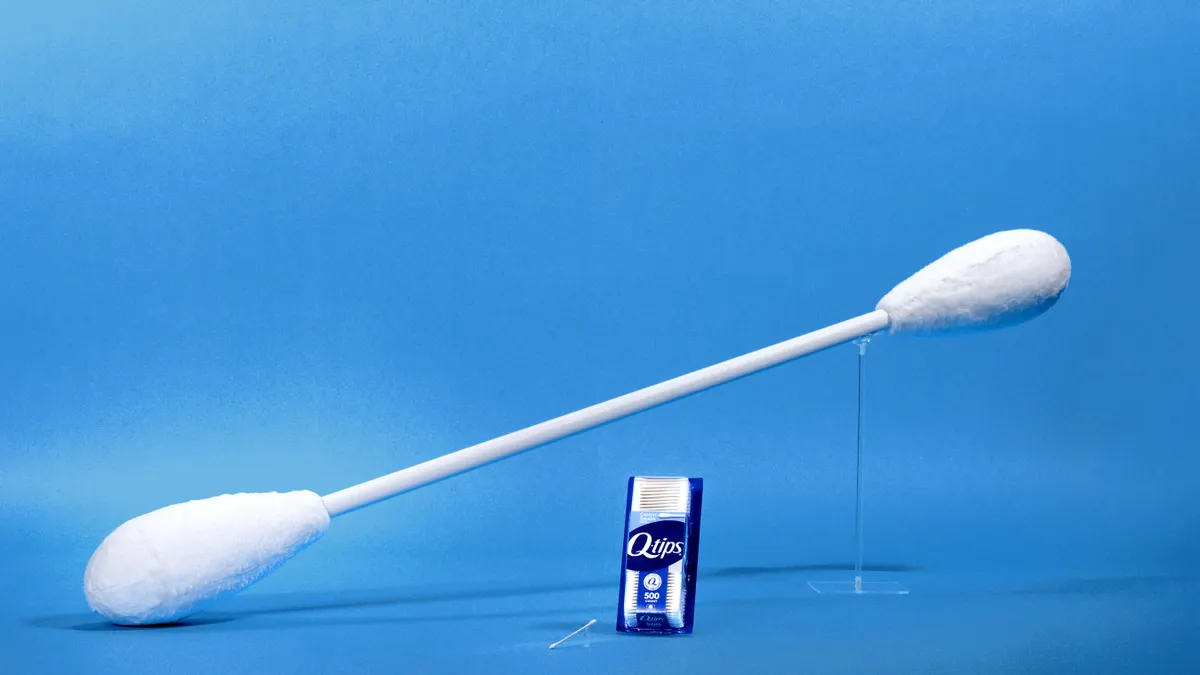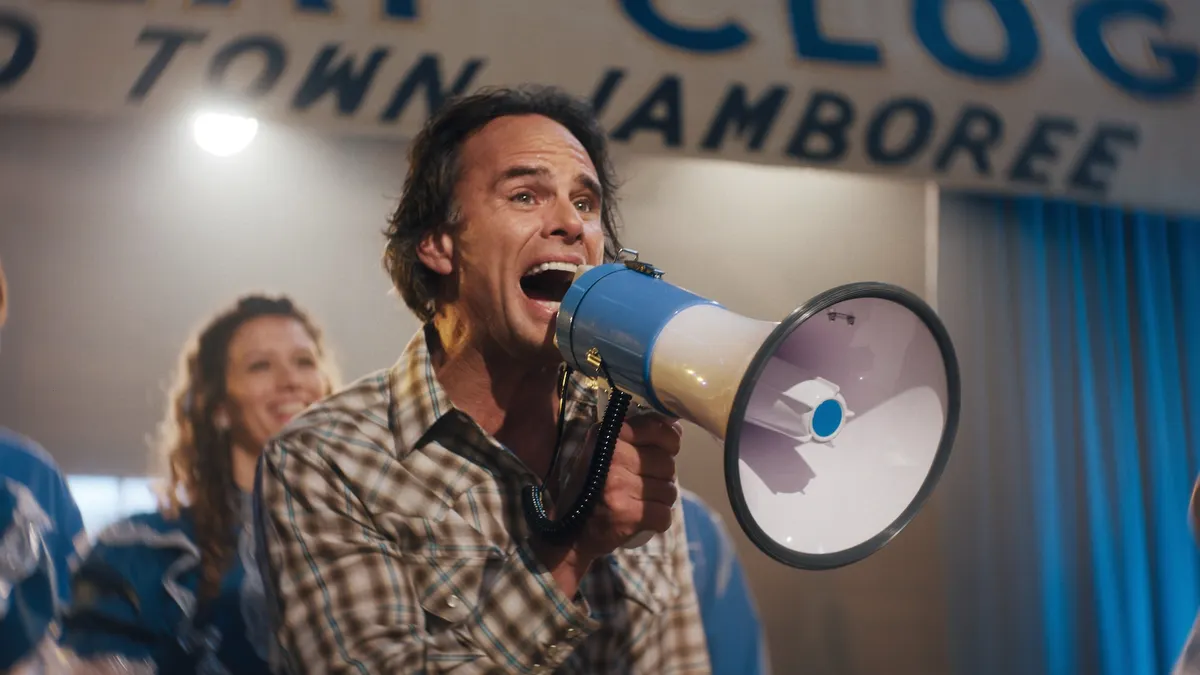While dozens of products found their way into season three of Netflix's "Stranger Things," the jury is still out on whether tie-ins with streaming video hits can generally spur the kind of brand recognition that sponsoring marketers seek. Nevertheless, several forces are likely to continue to drive interest in streaming product placements.
The growth in streaming video platforms has expanded advertising opportunities outside of traditional channels like TV. Streaming continues to pick up traction with cord-cutting, ad-averse Gen Zers, which has prompted brands interested in reaching the elusive demographic to consider Netflix and other subscription services that don't typically run ads.
"If not daily, at least three to four times a week, we are getting new brands approaching us about SVOD [streaming video on demand] opportunities," Stacy Jones, CEO of Hollywood Branded, told Marketing Dive. "It's a massively eager world of brand marketers right now."
Keeping up with streaming
SVOD and over-the-top (OTT) streaming are growing faster than cable TV. But because many streaming platforms are ad-free, product placements, brand integrations and co-promotions are a bigger focus.
"If not daily, at least three to four times a week, we are getting new brands approaching us about SVOD opportunities."

Stacy Jones
CEO, Hollywood Branded
Frank Zazza, a TV branded entertainment consultant and more famously the man who orchestrated the Reese's Pieces product placement in "E.T. the Extra-Terrestrial" and the Junior Mint placement on "Seinfeld," chuckles at the recent surge in streaming content.
"There are only a certain number of hours in the day. You have Netflix, Amazon Prime, WarnerMedia ... How much time are we going to have to watch?" Zazza told Marketing Dive. "It seems to be a major concern."
According to a 2019 report from the Bureau of Labor, the average American over age 15 watches TV for 2.8 hours per day. Netflix released similar data specific to its own users, saying that subscribers watch an average of 2 hours per day. The Convergence Research Group's annual "The Battle for the American Couch Potato" report forecasts a loss of 4.56 million TV subscriptions in 2019.
"Everyone is knocking down the doors at Netflix and Hulu and Amazon when they put out a show that becomes the new cult show to watch," said Leo Kivijarv of the product placement research firm PQ Media.
However, just jumping on the bandwagon may not be the best approach, warned Erin Schmidt, chief strategy and client service officer at Branded Entertainment Network.
"It's reactive, not proactive," Schmidt said. "There's far too much incredible content out there to not have a proactive strategy."
No tried-and-true method
Schmidt and other experts recommended marketers develop a series of different integrations over multiple seasons and shows rather than putting all of their eggs in one basket. As for which show or platform to choose, Schmidt said there isn't a tried-and-true method. A key component of determining a streaming strategy is defining the type of product integration marketers want. Unfortunately, each type can be only vaguely defined, per Jones.
Product placements can be paid or unpaid collaborations between brand and media owner, allowing a mutually beneficial partnership where a product or brand logo is shown on screen in a way that's authentic to the content story. Branded integration goes further as a strategy that includes working the brand more deeply into the story or dialogue of a show across an entire episode or season.
Co-promotional strategy is the most elaborate approach, involving advertising and marketing from the brand on behalf of the content. Take Coke's partnership with "Stranger Things," in which the TV show co-creators helped shoot an ad to resurrect an old beverage flop — the notorious reformulation dubbed New Coke. Determining which method and what content to go with is a difficult decision.
"There's not one particular integration where I'm going to say, 'yeah, that's a home run,'" Schmidt said.
A need for standardization
It's also difficult for brands to know which tactics work without proper data. With traditional product placement on cable TV, advertisers have access to specific viewership demographics by third-party measurement agencies like Nielsen. But the streaming industry is "years away" from figuring out third-party data standards for content, according to Kivijarv.
While Netflix occasionally releases viewership stats for shows, like it did for "Stranger Things," that data isn't uniformly distributed. Netflix and other streaming platforms don't have an obligation to brands to release any metrics. When the platform do share numbers, it's often to tout big, impressive statistics.
Nielsen is in the early stages of measuring streaming viewership. The researcher's Q1 audience report gave insight into Netflix viewer habits. The company also has verified different stats that Netflix's self-reported, like viewership of the original movie "Bird Box." Netflix has occasionally taken issue with Nielsen's reportage, but hasn't shared much information on its own collection methods.
Using AI to forecast impressions
Despite some of the black-box qualities of streaming, predicting viewership before shows are even released to help marketers decide where to place their bets is getting easier. But currently, there's no set formula.
"The metrics are the number one fear factor."

Stacy Jones
CEO, Hollywood Branded
While some brands hire liaisons to strategize integrations, the methods for investing in placements, co-promotions or integrations are quite diverse. In some cases, brands coordinate integrations in-house without a third-party data company and view the data to back up these integrations as a "luxury," according to Dominic Artzrouni, founder of Concave Brand Tracking. Companies can also pick up scraps of viewership numbers from Netflix as well as look at web traffic, social media chatter and brand impressions for past seasons.
"The metrics are the number one fear factor," said Hollywood Branded's Jones.
Another approach is to use technology to collect and mine product placements on streaming services and look at the bigger picture, as Artzrouni's firm does. Some companies, like Branded Entertainment Network, use artificial intelligence (AI) to help brands better inform content integrations. For brands weaving in more niche shows, such as a camera company FLIR, for which Hollywood Branded coordinated an appearance in the Netflix show "Ozark," it can be difficult to predict and measure success, per Jones. Sometimes placements or integrations are picked up by press and social media, but for the ones that go unnoticed, measuring traffic attribution and brand recognition is particularly murky.
"It's very difficult to know your audience at this time, because SVOD platforms typically aren't releasing metrics showcasing who is watching," Jones said.
The pre-historic age of branded integration
Due to the lack of data around streaming platforms, experts recommend placements in combination with other forms of marketing and advertising.
"Advertising still plays an incredibly important role," Schmidt said.
With more and more young people demanding ad-free content, it's becoming crucial for marketers to extend the conversation online organically and on channels such as social media where communities congregate.
Ahead of season three's premiere of "Stranger Things," fans engaged in more than 50,000 conversations online about brand partner Coca-Cola, per data from audience measurement agency Fizziology. Other partners, like Nike, whose shoes are worn by characters in the series, have seen around 20,000 conversations.
However, researchers are wary, noting that much of the hype could be fleeting. The most successful placements evolve over the course of years on shows that may not be a widespread hit, but fit with a particular demographic the brand is targeting, Artzrouni said. He added that brands will come knocking on his door asking about "Stranger Things" season four regardless.
For now, clients looking for product tie-ins with the next hit streaming show require more than a one-off approach.
"You need to look at this as a holistic strategy," Schmidt said.




















